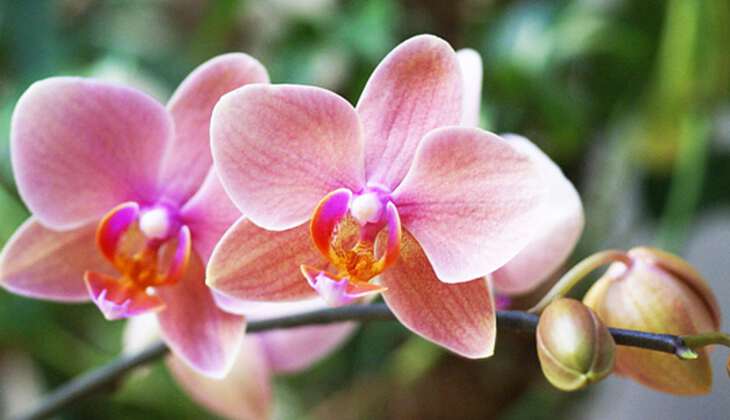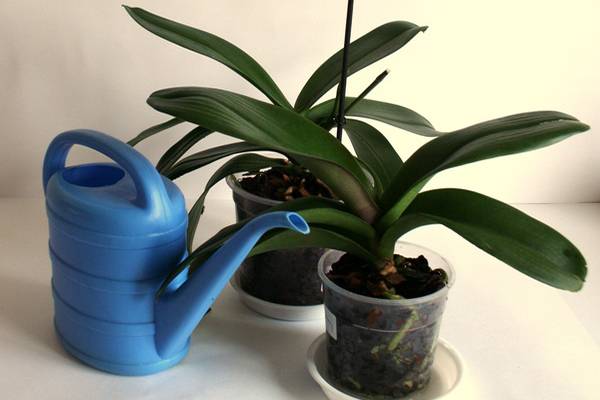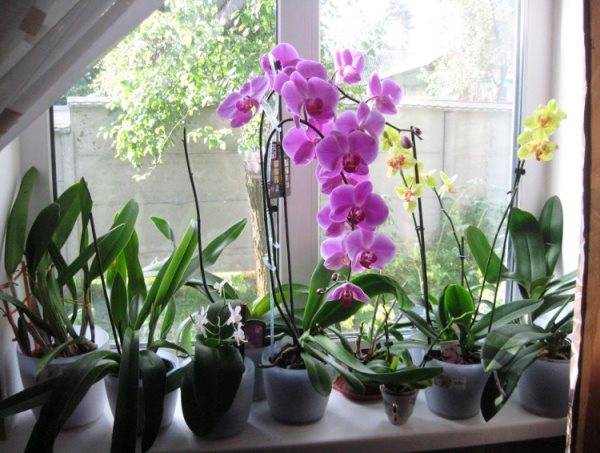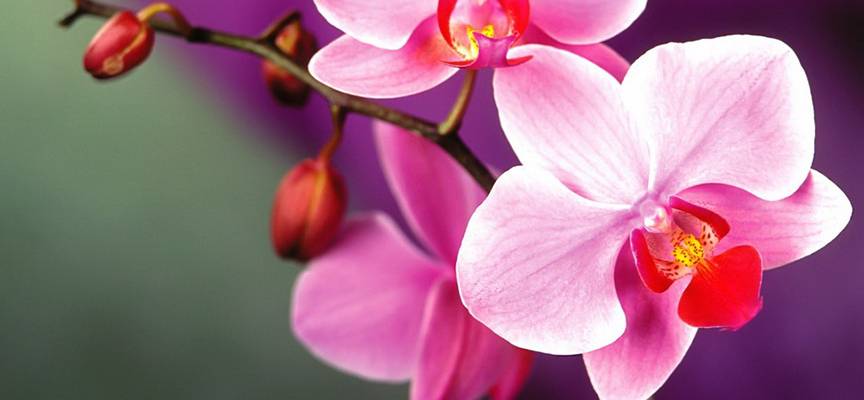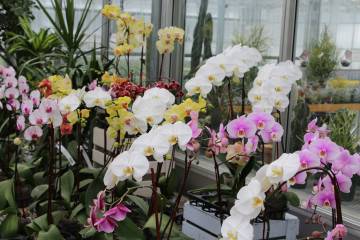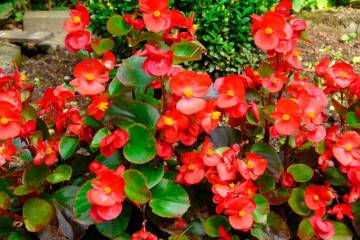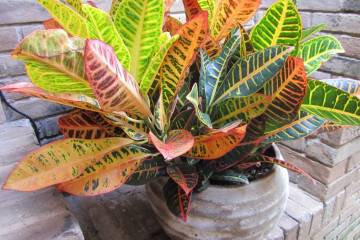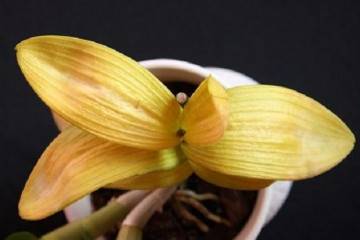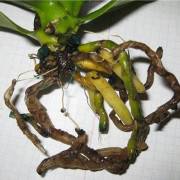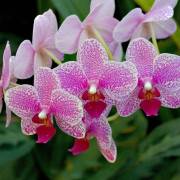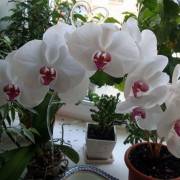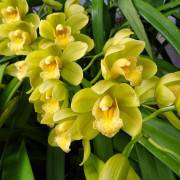Why do orchid buds fall: the main reasons for dropping
Content:
The orchid is a beautifully flowering plant. The culture is very popular with flower growers. However, sometimes various problems arise when growing a flower. Many are interested in why the buds of an orchid fall.
The main reasons for falling buds
Normally, the plant blooms for 3-4 months, then there is a break for 2-2.5 months, and then the buds appear again. However, sometimes they begin to wither and fall off immediately. In this case, the leaves may turn yellow and other problems appear. So why do unblown buds dry up in an orchid and what to do in such a situation?
Natural aging is believed to be one of the main causes of problems. In nature, an orchid can live for about 70 years. The plant is a long-liver. However, indoor flowers usually live no more than 7-15 years.
In other cases, it is necessary to change the care of the flower.
Improper watering
Lack or excess of moisture negatively affects the condition of the roots. They begin to dry out and rot. At the same time, the number of living roots becomes less and less, and the potential of the plant decreases.
Sooner or later, a moment comes when the remaining roots are not able to provide all the fragments of the culture with moisture. In such a situation, the culture can throw off flowers. Arrows often turn yellow and leaves wither.
Room temperature
If the orchid has picked up buds, but at the same time they do not bloom, the reason may be the wrong temperature regime in the room - an increase or decrease in indicators. Given the exotic origin, the culture requires quite high parameters.
Different varieties of orchids have their own temperature indicators, at which the plant experiences discomfort. So, phalaenopsis needs a temperature range of 14-40 ° C. With hypothermia or overheating of the culture, the most delicate parts of the plant - flowers and unopened buds - can fall off.
Overheating is heatstroke or sunburn. In winter, the plant can face the negative influence of heating sources. In summer, the culture can get burned due to exposure to direct sunlight. In this case, the evaporation of moisture is higher than its input. As a result, the bush dehydrates. In this case, the buds can dry out, which leads to their falling off.
Lack of lighting
In the autumn-winter period, the length of daylight hours is seriously reduced. At this time, the question becomes relevant: why do the flowers of an orchid fall and what to do in such a situation?
The answer is simple enough - to provide the plant with additional light sources. The duration of daylight hours should be at least 12 hours per day.At the same time, a plant with blossoming flowers does not suffer from a lack of light, but the buds in such a situation may not open.
In summer, it is important to remember that the direct rays of the sun can scorch delicate flowers.
Flower processing options
To cope with the problem, you need to understand why the orchid sheds buds and what to do in this case. If the flowers fall off due to fungal infections, fungicides can be used. It is also permissible to use organic compounds and folk recipes.
Chemicals
Such funds help to quickly achieve good results. They can be divided into 4 hazard classes. Substances are recommended to be used strictly as directed, strictly adhering to the dosage. Otherwise, chemistry will harm both the plant and the person.
The most popular orchid treatments include:
- fitoverm;
- aktara;
- tanrek;
- confidor.
Karbofos, actellik, vertimek are considered more effective, but also quite harmful. Phytosporin can be used to combat fungi. It is permissible to use it for preventive purposes when transplanting a crop and subsequent pruning of a plant.
In addition, there are many biological agents for protecting flowers from insects. Culture does not accumulate harmful funds. At the same time, parasites do not develop resistance to them. In addition, such substances increase the immunity of the orchid. Florists advise using nemabakt, bicol, verticillin.
Folk remedies
If you don't want to use chemicals, you should try folk recipes:
- soap solution. To do this, add 1 tbsp to 1 liter of water. a spoonful of liquid soap. With the resulting composition, you need to process the leaves and stems. You can also use a regular dishwashing detergent;
- tobacco tincture. For 1 liter of water, you should take 40 g of tobacco, crushed to a state of dust. Insist the remedy for a day, after which they filter and spray a flower with it;
- infusion of onions. The vegetable must be chopped to a puree state and mixed with 1 liter of boiling water. Insist 7 hours and process the foliage and stems. This should be done 3-4 days in a row;
- dried citrus peels. Take 100 g of raw materials, pour 1 liter of water and leave for 2-3 days. The resulting infusion is sprayed on the plant once a week.
Correct orchid bloom
In order for an orchid to bloom luxuriantly and profusely, it needs to be provided with full and high-quality care:
- winter bloom must be maintained with backlighting. This should be done at least 3-4 hours in the evenings;
- in summer, flowering plants should be protected from direct sunlight. Instead of a window sill, the flower can be placed on a shelf near the window or placed on a table in the center of the room;
- to protect orchids from heating sources, it is worth raising the pots on the windowsill. To do this, use shelves or stands. You can also cover the battery with a damp towel;
- if the buds do not bloom due to low humidity, it is worth using a household humidifier. You can also systematically spray the room with warm water. You can place the flower near trays with damp expanded clay or pebbles. In this case, the roots of the plant should not touch the water;
- during the formation of the peduncle, the number of waterings should be reduced. When the flowers start to bloom, you can return to normal mode. This helps to avoid dehydration, especially in hot weather;
- it is recommended to feed the plant with fertilizers during the laying and development of the peduncle. During the blooming period, feeding is useless. This will not affect the size and number of buds in any way.
The flowering of a culture depends on many external factors - moisture, temperature parameters, sun. In this case, plant care is also of great importance.
Flower care in the future
In order for the plant to grow and develop normally, it needs to provide full illumination, a good watering regime and optimal temperature conditions at the level of 22-26 ° С.
The need for moisture is determined by the presence or absence of condensation in the pot. It is worth watering the culture by immersing the container with the flower in a bowl filled with water. The air around the plant should be humidified with a spray bottle. Humidity parameters should be 45-60%.
Complete plant care is impossible without timely fertilization. Orchids need feeding during the period of active growth and ejection of peduncles. It is recommended to use special fertilizers for flowering crops. It is necessary to soak the flower in a pot in water, adding a concentrated composition to it. After 10-20 minutes. the plant must be pulled out and the excess liquid must be drained. The procedure should be carried out every 2 weeks.
Orchids are wonderful ornamental plants that bloom great with proper care. In order for the culture to grow and develop normally, it must be properly watered and fed. Protection of the plant from diseases and pests is of no small importance.
